[Franz Kafka asked, “If the book we are reading doesn’t wake us up with a blow to the head, what are we reading it for?” In these posts, let’s exchange books & culture that have been giving us these blows to the head. Also check out the first post in the series, on Katherine Rundell.]
OK, it stretches the limits of sense to suggest you can “read” an architect’s buildings. But ever since Chinese architect Liu Jiakun was awarded this year’s Pritzker Prize, I’ve been slightly obsessed with his work, and with the ways it’s written about.
Liu’s buildings are not rejections of tradition or nature, as is much of modern architecture. They aren’t clever or self-absorbed, nor plagued by academic over-thinking and self-referentiality.
To my way of thinking, Liu’s work exemplifies culture at its best.
The cultural critic Raymond Williams writes that “culture” is one of the most complicated words in the English language—and it’s complicated because it seems so simple. Yet at its root it has two distinct elements: cultus, related to worship, where we get our word “cult”; cultivate, tending or caring, husbandry, nurturing life. Out of these distinct roots grew our modern sense of culture as a unique human sphere, the cultivation of our minds to higher aims and purposes. Now we tend to dismiss the higher ends; “culture” simply designates the generic realm of all human endeavor not directly related to instrumental work. It’s used as a synonym for society, with some additional “culture war” baggage.
What does this have to do with Liu Jiakun’s work? Consider the ways this work has been written about since the announcement. The Pritzker Prize Committee, in its announcement awarding the prize to Liu, says:
Through an outstanding body of work of deep coherence & consistent quality, Liu Jiakun imagines & constructs new worlds, free from any aesthetic or stylistic constraint. Instead of a style, he has developed a strategy that never relies on a recurring method but rather on evaluating the specific characteristics & requirements of each project differently.
This description makes it sound like Liu epitomizes our hypermodern understanding of freedom—as the absence of any constraint on the self, the lack of any and all claim on the sovereign will. The implicit ideal of “culture” here is absolute freedom, theoretical “strategy” divorced from organic limits. But look at his work. Does it really lack “aesthetic or stylistic constraints”? How can it display “deep coherence” without cohering into a style? How can it reveal “consistent quality” without revealing an underlying aesthetic vision?
Take a look yourself—is this work is “free from any aesthetic or stylistic constraint”?

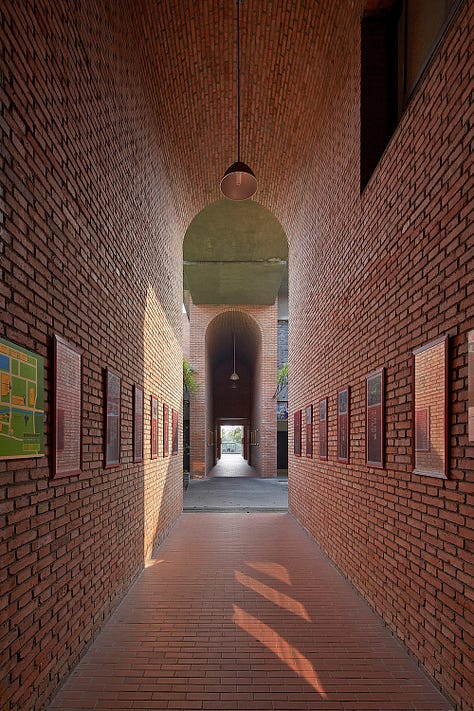


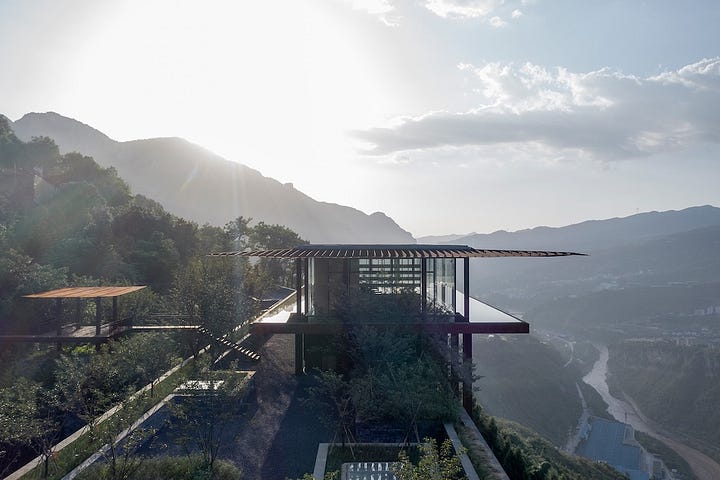


Liu provides a much better description of his own work—of the style and aesthetics that underlie this work:
I always aspire to be like water—to permeate through a place without carrying a fixed form of my own and to seep into the local environment and the site itself. Over time, the water gradually solidifies, transforming into architecture, and perhaps even into the highest form of human spiritual creation. Yet it still retains all the quality of that place, both good and bad.
This statement—an absolute blow to the head!
It’s the absolute opposite of the committee’s words, an articulation of the source of the coherence and quality that exemplify his work. Far from absolute freedom, Liu’s architecture articulates perfectly the power of constraint to fuel creativity; the tendency of the very greatest culture to draw deeply from and integrate with nature, not abandon it; and the ultimate aspiration of all culture to move toward the “highest form of human spiritual creation.”
The passage is striking, too, in how it resonates with the creation account from Genesis 2:
These are the generations of the heavens and of the earth when they were created, in the day that the Lord God made the earth and the heavens,
And every plant of the field before it was in the earth, and every herb of the field before it grew: for the Lord God had not caused it to rain upon the earth, and there was not a man to till the ground.
But there went up a mist from the earth, and watered the whole face of the ground.
And the Lord God formed man of the dust of the ground, and breathed into his nostrils the breath of life; and man became a living soul.
And the Lord God planted a garden eastward in Eden; and there he put the man whom he had formed.
And out of the ground made the Lord God to grow every tree that is pleasant to the sight, and good for food; the tree of life also in the midst of the garden, and the tree of knowledge of good and evil.
I have no reason to think Liu was deliberately alluding to Genesis in his description of his work. But the water trickling up and covering the ground, then the architecture of man from that watered dust, and the planting of the garden after that… When you look at Liu’s work, its organic integration of water and plant and building, well, it certainly helps me better understand the strange creation process described in Genesis 2.
We’re in the middle of Lent (unusually, in both the Eastern and Western churches this year). On Ash Wednesday, Christians receive the sign of the cross on their foreheads—in ash—and receive an ambiguous blessing: “For you are dust, and to dust you will return.” Or, in its abbreviated form, “Ashes to ashes, dust to dust.” The blessing commemorates our creation as described in Genesis 2, and reminds us all that it is our fate to return to earth, to decompose and become again what we were at the start: dirt.
Liu’s account of his creative process mirrors the first part of this blessing, our creation, and his work also evokes the second part, our return to dust upon our death:

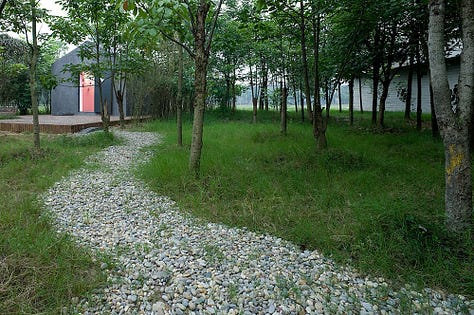
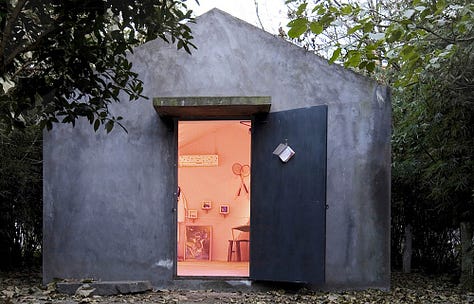
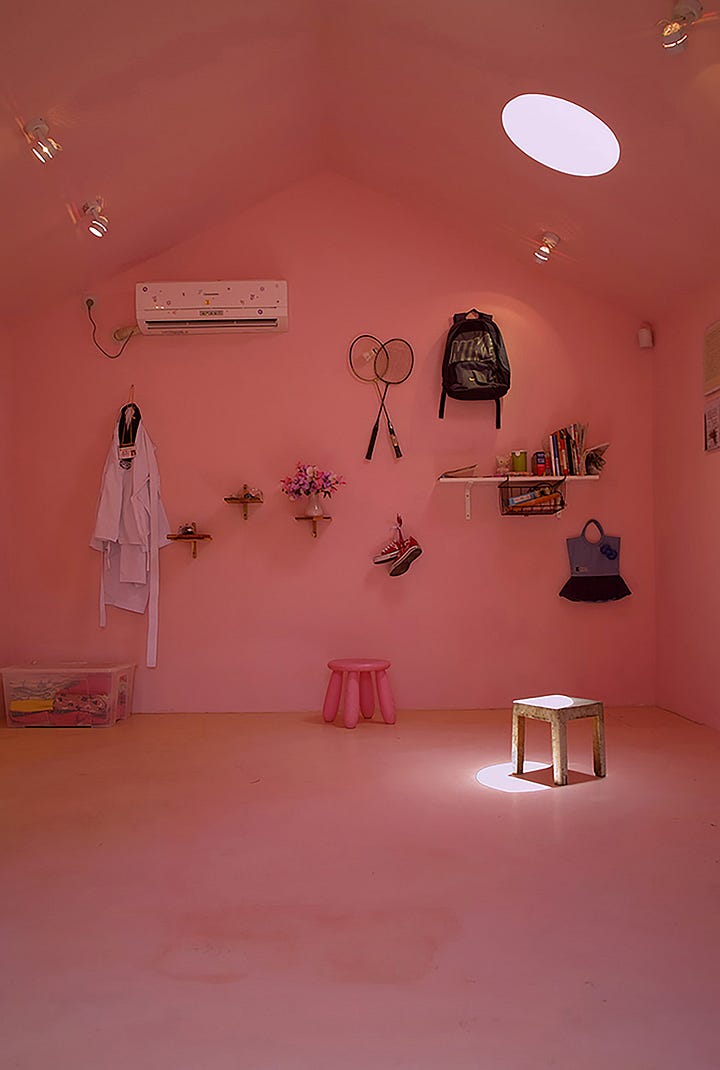

In the Hu Huishan Memorial, built to commemorate the life of a 15-year-old girl killed in the 2008 Sichuan earthquake. She was one of more than 90,000 casualties.
The memorial, as you can see from the first couple photos above, sits unobtrusively, nearly hidden by the woods around it.
It’s a striking building: designed with the same roof angles as the emergency shelters erected after the earthquake, it evokes transience even as its simple concrete walls make it seem eternal—as if built long ago to stand long into the future.
And inside, the material belongings of the dead girl, all pushed against the walls and illuminated by the single skylight, give an overwhelming sense of loss and emptiness. The memorial is a body whose soul has departed. Ashes to ashes, dust to dust.
Around Substack
helps us see how the God’s-eye view is the death of poetry: considers language, administration, and the modern university: on “the two mirrors of prayer”:And you?
So, that’s me this week. What about you?
What’s woken you up with a blow to the head lately?







